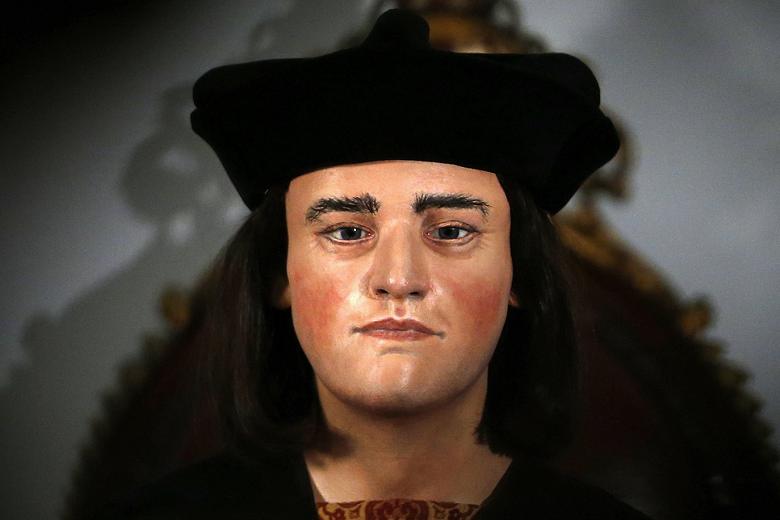Who was King Richard III?
January 21, 2015
Who was King Richard III?
Usurper to Throne, King Richard III of England was killed in the Battle of Bosworth Field on August 22 1485, during the War of the Roses. The three most commonly known facts of his life are that he stole the crown, murdered his nephew and died wailing for a horse at the Battle of Bosworth in 1485. His death ushered in the Tudor dynasty. Richard is often named the last “medieval” king of England. Richard usurped the crown from his 12-year old nephew claiming that his nephew was illegitimate (who would later die). Richard was a conspicuously loyal lieutenant to the boy’s father, his own brother, King Edward IV. It is also true that once he was king, Richard made a great effort to promote justice to the poor and needy, and stabilize royal finances.
His confiscation of the Crown threw English politics into a turmoil from which it did not fully recover for another two decades. William Shakespeare may have taken some liberties in describing his physical deformities and the horrors of Richard’s character, but he remains a criminal king whose actions brought havoc on his realm.
But in contrast to these facts, Richard remains the only king with a historical society devoted to rehabilitating his name, and it is a trait of some “Ricardians” to refuse to acknowledge any criticism of their hero.
His body was brought to Greyfriars Friary in Leicester, where it was buried in a crude grave in the friary church. Following the friaries dissolution in 1538 and its subsequent demolition, Richard’s tomb was lost. An account arose that Richard’s bones had been thrown into Soar River at the nearby Bow Bridge. His remains it seemed have been lost and have little chance of ever being found again.
But DNA tests have confirmed that human remains found buried beneath an English car parking lot during an archeological dig in search of the lost monarch funded by the Richard III society of England in late 2012 are those of the country’s King Richard III.
Richard III’s body was found in a roughly-hewn grave, which experts say was too small for the body, forcing it to be squeezed into an unusual position and the skeletons hands had been tied.
Its feet had been lost at some point in the intervening five centuries, but the rest of the bones were in good condition, which archaeologists and historians say was incredibly lucky, given how close later building work came to them — brick foundations ran alongside part of the trench, within inches of the body.
What was initially thought to be a barbed arrowhead found among the dead king’s vertebrae turned out instead to be a Roman nail, disturbed from an earlier level of excavation.
Archaeologists say their examination of the skeleton shows Richard met a violent death: the King had probably been killed either by a blow from a large bladed weapon, likely a Halberd, that cut off the back of his skull and exposed the brain, or by a sword thrust that penetrated all the way through the brain. There were signs of other wounds on the skeleton which had probably been caused after death as “humiliation injuries” inflicted as a form of posthumous revenge.
One condition of being allowed to disinter the skeleton was, the excavators agreed that if Richard was found his remains would be reburied in Leicester Cathedral, and the burial is expected to take place in Leicester on 26 March 2015.
The Long dead king of England’s body has revealed several interesting facts about the monarch that might have profound historical implications:
-William Shakespeare describes Richard as a dark eyed hunchbacked monster. Though the King’s back was twisted due to a severe case of scoliosis he was not in fact a hunchback.
-Lord Farquaad in Shrek is a caricature of King Richard.
-DNA tests reveal Britain’s long-lost King Richard III was blue-eyed and likely blond-haired This suggests that he was not the dark-haired, steely-eyed monarch portrayed in well-known historical images.
-His DNA may bring various monarchs’ right to rule into question.
-One living relative on Richard’s female line, Michael Ibsen, was an exact match to his mitochondrial DNA. Scientists weren’t able to trace a living relative on the male line, using the Y chromosome. which has raised a possibility. that neither he, nor many other monarchs, actually had a cast-iron claim to the throne.
Records of Britain’s nobility made it simple to follow such families back century after century. There are five potential living relatives from the male line, linking Richard III to his predecessor Edward III (because Richard himself had no surviving children). One of the five was quickly eliminated from the puzzle because his Y chromosome DNA did not match the other four, suggesting a relatively recent “false paternity event,” and when scientists carried out checks on the Y chromosome DNA of the remaining four, they discovered there was no match there either, revealing at least one other case of “false paternity” in the generations of fathers and sons leading back to Edward III. It’s impossible to tell where that break is, because we simply don’t know, but it could be at any one of the 19 links in the chain between those two individuals. The same crime he deposed his nephew of the crown for, he may well himself have been the product of. Whatever the implications of the latest discovery, current monarch Queen Elizabeth II’s position and House of Windsors claim to the throne was secure.
King Richard, the last king of the House York, a child murdering, crook-backed, dissembling Shakespearean monster? Or misunderstood, loyal, enlightened, slandered hero? Which is the truth? Somewhere in between.










